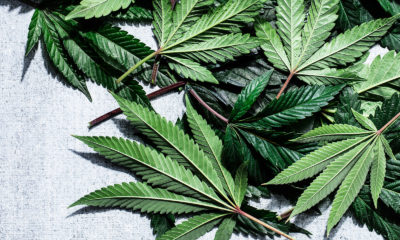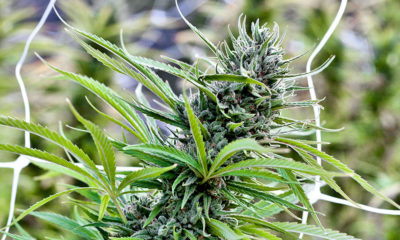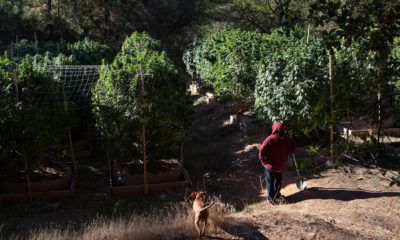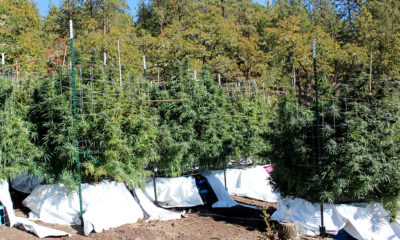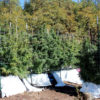Cultivation
WATCH: Dry Farming Cannabis
Some farmers in Humboldt are growing marijuana — without using any water.
The small farming community of Holmes Flat lies at the northern end of the Avenue of the Giants, a famous scenic drive through the ancient redwoods of Humboldt County, California. With its rich alluvial soil, this idyllic valley next to the Eel River is a great place to grow crops like alfalfa. Recently, cannabis farmers have moved into the area and are experimenting with a radically different way to grow marijuana: dry farming.
“Dry farming is not for the faint of heart,” says Sunshine Johnston of Sunboldt Grown, who decided to dry farm her cannabis for the first time in 2017.
When Johnston transplanted her plants out of pots into the native soil in June and initially saw them suffering under the hot sun, she was terrified she’d made a huge mistake. Slowly, the plants started to recover, and by the time she harvested in October, they were full of big sticky colas. It came as a surprise to Johnston that although she didn’t water the plants all season, they had very high resin yields and one of her strains tested at 30.5 percent THC.
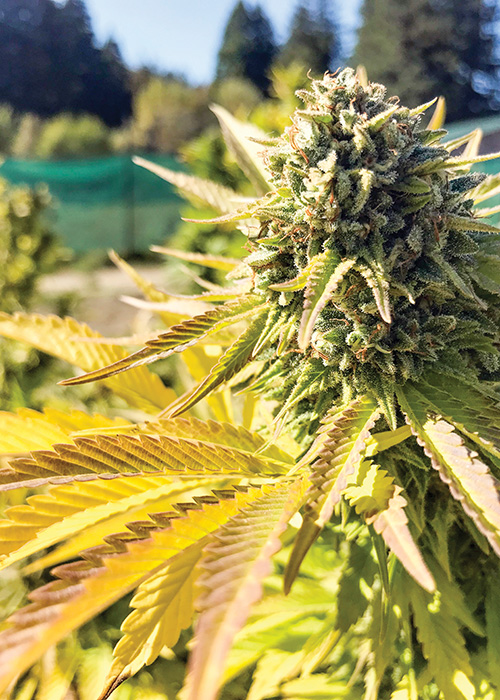
Sun-ripened dry-farmed plants at Sunboldt Grown sit ready for harvest in October.
“I learned that plants do better with less water and less fertilizer,” Johnston says. “I had heard that before, but I didn’t really understand it until I experienced it.”
Because she didn’t add any fertilizer or amendments, her crop is a true expression of terroir, meaning characteristic tastes and flavors of the environment are imparted into the cannabis through the local soil and watershed. Instead of the saltiness typical of plants that have been fed with bottled nutrients, her cannabis exhibits a rich flavor profile of the native soil and allows the terpenes to shine through.

In June, Crystal Ortiz of High Water Farm tills her field in preparation for planting.
“It’s super counterintuitive for me,” says Johnston’s neighbor Chrystal Ortiz of High Water Farm, who is also dry farming. “I spent the last 18 years growing in forest soil with a mycelium-rich, no-till style of farming, and now we’re doing this, which is really just as barebones and basic as it can be.”
Dry farming has more to do with heat and pressure than people realize, Ortiz explains, as she brushes away the top inch of dry soil to reveal moist, rich soil underneath. Ortiz and her husband Noah use a tractor to till the top few inches of soil, breaking it up into into a super fine layer. She says it’s important to properly till the soil so that on the hottest, driest days, the vapors moving upwards during evaporation are able to be easily absorbed by the roots. Like Johnston, Ortiz and her husband don’t apply apply any liquid fertilizer on their farm, but rather, they plant a nutrient-rich cover crop in the winter and mix dry amendments into the soil in the spring before planting.
In addition to producing a flavorful, clean smoke, the main benefit of dry farming is water conservation. For decades, Humboldt’s watersheds have been negatively impacted by growers diverting water out of streams and rivers, threatening the survival of local wildlife like salmon. By choosing to dry farm, Sunboldt Grown and High Water Farm are proving that there is a more fish-friendly and environmentally conscious way to produce great weed.
Originally published in the print edition of Cannabis Now.





